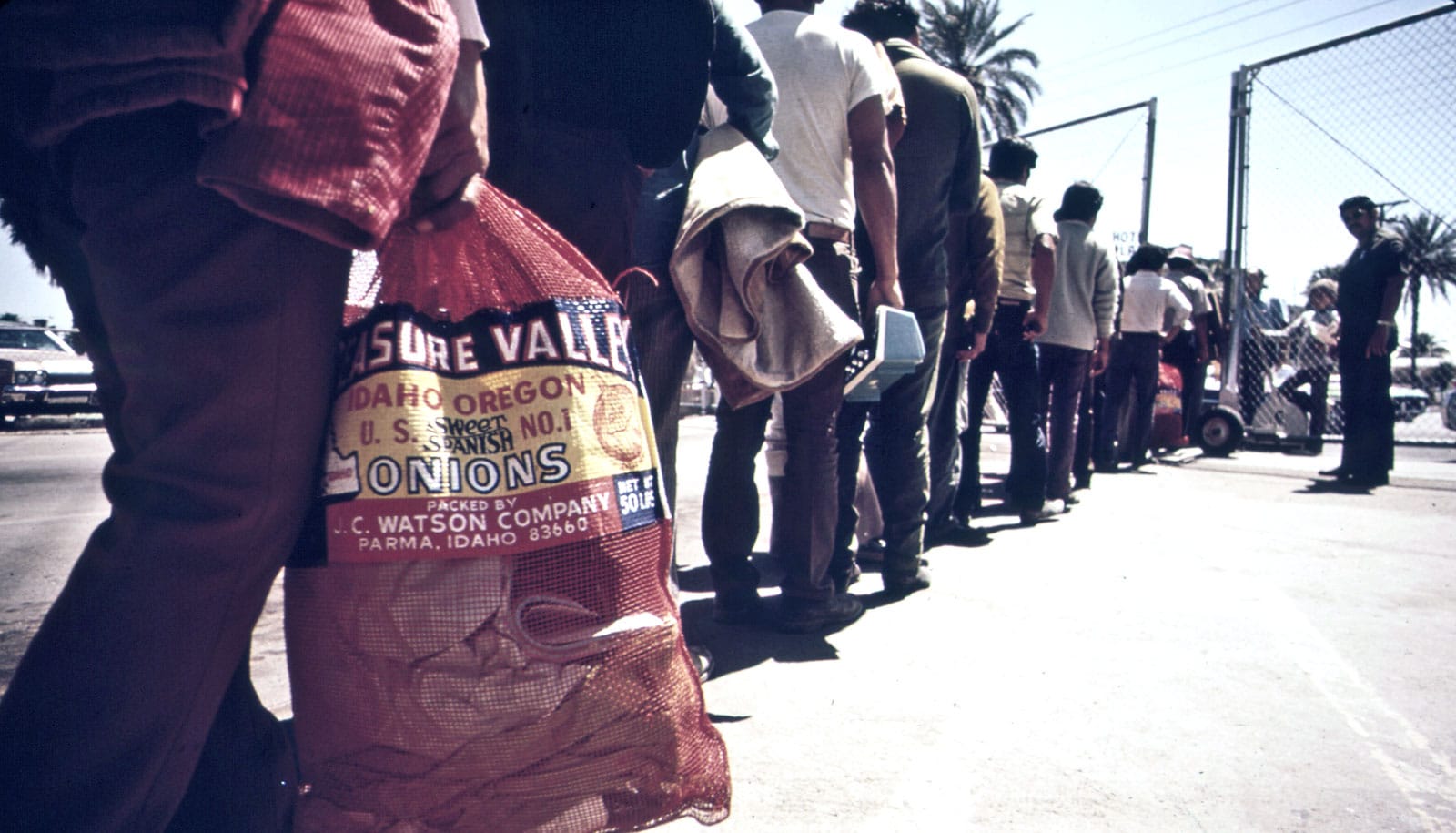Since 2008, more Mexicans have been leaving the Unites States than arriving. But the myth that undocumented Mexican migration is out of hand still lingers today, says Ana Raquel Minian, assistant professor of history in the Stanford University School of Humanities and Sciences.
That narrative and other negative, untrue stereotypes about Mexican migrants spread in the 1970s when undocumented migration across the US-Mexico border surged. As a result, the positive impact these migrants made in their communities both in the US and Mexico over the past decades has been obscured, Minian found in her research.
Minian, who is also affiliated with the Center for Comparative Studies in Race and Ethnicity, explains how unauthorized migration from Mexico to the US became entrenched between 1965 and 1986 in a new book, Undocumented Lives: The Untold Story of Mexican Migration (Harvard University Press, 2018).
She discussed her research, the book, and how ideas about Mexican immigration are still shaped by the surge of immigration in the 1970s.
What inspired you to pursue this research?
I grew up in Mexico and was astonished at how most of the discussion around Mexican migration focused on what happened to migrants once they attempted to cross the border north. I was interested in understanding not only what happened in the United States but also what happened in Mexico.
I wanted to understand the position of both the US and the Mexican governments on migration as well as the conditions that led people to risk their lives at the US-Mexico border in order to live in a country where they were viewed as “illegal aliens.” I also wanted to explore the lives migrants led in the United States and the communities they created across borders.
What are some of the biggest takeaways from your research?
My research examines unauthorized migration from Mexico to the United States in the period between 1965 and 1986. That era saw an unprecedented surge in circular, undocumented migration and key shifts in US and Mexican government responses.
I found that up to the 1960s Mexican officials discouraged emigration, but by the 1970s, those same officials encouraged the departures of working-class men as a solution to high unemployment and population growth in the country. Simultaneously, the US government attempted to address these problems by fortifying the border and conducting raids in Latina/o communities.
Migrants described their diminished capacity to belong in local and national spaces by characterizing themselves as being “neither from here nor from there”—ni de aquí ni de allá. When they resided in their hometowns in Mexico, their families and friends pressured them to head north to make money. Conversely, when they moved to new cities and towns in the US, their communities in Mexico insisted that they return home.
Migrants unwittingly resisted the idea that they were superfluous in Mexico by becoming indispensable economic agents in their hometowns through the money they sent from abroad. They countered their illegality north of the border by establishing that undocumented migrants deserved constitutional rights and creating new meanings of community life. These actions provided them with partial inclusion in the multiple locales they lived, but only as migrants who lived, at least some of their time, in the United States. For their part, elderly Mexican men, along with women and queer men, commonly responded to dominant gender and sexual ideologies by remaining in Mexico and depending on foreign remittances to survive.
In 1986, the US Congress passed the Immigration Reform and Control Act, making it more difficult to cross borders. By then, however, undocumented migration had already become a self-perpetuating phenomenon. In light of the new hardships of migration, many Mexican families decided to settle together in the United States and dared not return to Mexico for fear that they would not be able to get back into the United States. Rather than feeling “pushed” from all the spaces in which they resided, they now felt entrapped in the United States, which they referred to as the jaula de oro, or the “golden cage.”
Why is the time between 1965 and 1986 important in the history of Mexican migration in the US?
This period saw a rapid rise in undocumented migration, and it demonstrated that Mexican migrants preferred not to settle in the US. In 1964, the US ended the Bracero Program, a bilateral guest worker program that had started in 1942 through which Mexican men worked temporarily in the US. In 1965, Mexican men who had become accustomed to working in El Norte realized that if they wanted to keep crossing the border, they had to do so without papers. Unauthorized entries multiplied. The number of Mexican citizens apprehended in the US—which is suggestive of the number of Mexican undocumented migrants—rose from about 55,000 in 1965 to about 1.5 million in 1986.
Rather than settling in the United States, however, in the years between 1965 and 1986, the majority of migrants engaged in circular migration. Despite no longer being bound to return to Mexico by the Bracero Program, the overwhelming majority of migrants chose to cross back and forth across the border. Indeed, 86 percent of all entries were offset by departures.
What were some of the popular stereotypes of Mexican migrants then and how do the facts you discover counter them?
Like today, during the 1970s, migrants were accused of taking jobs away from US citizens. This notion ignored that citizens were actually losing jobs because of the broader restructuring of the economy. Not only were many industrial jobs moving abroad but they were also being replaced by service-sector jobs that paid much less. Undocumented migrants took these low-paying jobs that US citizens refused.
Another stereotype about migrants was that they abused welfare. During the 1970s, the welfare system became increasingly maligned and Mexican migrants were often accused of depleting welfare resources. However, undocumented Mexicans rarely utilized tax-supported programs. Although unauthorized migrants paid for social services such as Social Security and taxes, few—1 to 3 percent—filed for benefits or tax refunds even when money was due to them because of fear of apprehension.
Migrants’ unauthorized border crossings also led many Americans to associate Mexican migrants with criminality. However, undocumented migration was, in fact, only a misdemeanor. If anything, undocumented migrants were often the victims of crime. Employers refused to pay them and people mugged them regularly knowing that because of their unauthorized status migrants would not denounce these actions.
What are some misperceptions about Mexican migration in America that still remain today?
The first myth that exists is that Mexican migration is out of control. In fact, according to the Pew Research Center, since the Great Recession of 2008 Mexican net migration is negative, with more Mexicans leaving the United States than arriving.
Like in the 1970s, Mexican migrants are still accused of abusing welfare, increasing crime, taking jobs away from US citizens, and bearing children in the United States.
Not only are these stereotypes untrue but they obscure the migrants’ lives and humanity.
Source: Stanford University



